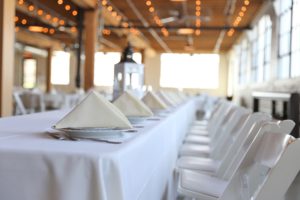Make the Perfect Wedding Seating Plan (Wedding Series: Part 4 of 6)
Disclosure: In our articles, we independently choose products and services to feature that we think you'll find useful. This post contains affiliate links. If you make a purchase after clicking one of our links, we may earn a small commission.Are you going to have a large wedding? A small one? What about one that is well organized and planned out? If you want your big day to feel less cramped and for it to smoothly transition from the ceremony to the reception, you will want to have a detailed seating plan. Here are some easy steps you can take to make that happen:

Step 1: Who “RSVPed” for your Wedding?
You can only plan for those that RSVP ahead of time, therefore there is no need to worry about everyone else. By not “RSVPing” ahead of time, they are saying either that they can’t make it, or don’t want to go.
After you have your ceremony venue, and your wedding reception planned. Figure out how many seats you are going to need. Traditionally, on the aisle of the ceremony, the bride’s family sits on the left side, and groom’s on the right. If more of either the bride’s or groom’s family RSVPed than the other side, you may want to consider altering that arrangement.
Step 2: Create a Ceremony Seating Chart
Creating a chart will simplify things when the big day finally comes. Have a chart of seating for both the ceremony and reception. These charts should have each seat numbered, and then have each person assigned a number. When creating your chart, if you want a traditional wedding, keep these things in mind:

- The bride’s family sits on the left side of the aisle, and the groom’s on the right (as you’re looking up the aisle)
- The front rows are reserved for immediate family, the next rows for extended family, then friends.
- Parents are seated closest to the aisle in the front row
- Family is seated just before the ceremony begins, starting with great grandparents, then grandparents, then father, then mother.
- Siblings of the immediate family are seated first – first brothers, then sisters (unless they are ushers)
- Great Grandparents of the groom, then of the bride
- Grandparents of the groom, then the bride
- Father of the groom, (bride’s father will walk bride down aisle)
- Lastly the mother of the groom, and then mother of the bride (last person seated, indicates ceremony is going to begin)
- Grandparents, great-grandparents, and siblings are typically seated in the second
Tips: Here are some things you’ll want to consider in the seating arrangement.

- Sit people with bad eyesight close to the front.
- People with disabilities, that have a wheelchair, or those that have trouble walking, should be seated on an end seat.
- Try not to surround people with complete strangers.
Step 3: Appoint Ushers
Ushers should be kind, outgoing, talkative, and respectful. They also shouldn’t be a member of the wedding party. Traditionally, the brothers of the groom or the bride fill the role of ushers. If you don’t want to/can’t choose them (e.g. no brothers), choose whomever you want.

The ushers will take people to their seats before the ceremony. They should know the full plan early on.
Step 4: Create a Reception Seating Chart
Assuming you’re having a seated meal at your wedding reception, you will want a seating chart. This should be designed in much the same way as the one for the ceremony, except you will have to group people together in tables (instead of rows and columns) and based off of interests (rather than familial relations).
Keep the following things in mind when seating people based on tables:
- Age (seat people of similar age together, unless they have specific preferences)
- If you have a lot of kids, make a kids table, unless the parents would prefer for them to sit together as a family
- Don’t create a “singles” table
- Seat them with their friends (or people with like interests) instead
- Sit friends together
- Keep any familial feuds in mind
- Keep allergies in mind
- A difficult but necessary topic to deal with
- Ask all of your guests to include any allergies they have in the RSVP
Tip: Have your guests wear name tags on their jackets. That will help relatives that haven’t seen each other in a while not feel awkward not recognizing each other.

Step 5: Create Placeholder Cards
These are cards you place on seats for important guests, or for people you want to sit in a specific place at your wedding. You can write them out on paper, you can have it professionally printed, or you can buy your own. Minted.com offers options for placeholder cards (for seating), seating chart designs (so that everyone knows where to sit), and other necessary wedding papers (such as invitations).
If you found this article helpful, be sure to check out the rest of the series at planandorganize.com. Have a great wedding!
Kyle is a staff writer at Plan and Organize™ as well as our marketing coordinator. An undergraduate student at the University of Florida, Kyle enjoys writing about business, education, DIY, history, astronomy, and other science topics. In his free time, Kyle enjoys chess, astronomy, bird-watching and sci-fi.






 RSS - Posts
RSS - Posts